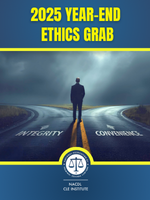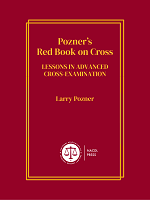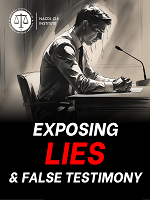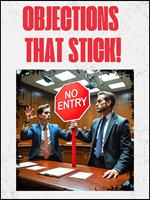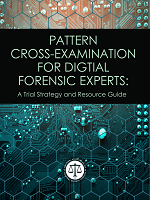State Information
In February 2020, the National Association of Criminal Defense Lawyers asked its membership about how it communicated with clients in custody. The survey focused particularly on lawyers’ ability to communicate with their detained and incarcerated clients. The below data is focused on findings regarding confidentiality, a key requirement of attorney-client communication.
| Facility | Phone | Video | In-Person Want to submit a correction or additional information about facilities you visit? Tell us in this form. | |
|---|---|---|---|---|
| Yellowstone County Detention Facility |
|
|
|
|
| Cascade County Detention Center |
|
|
|
|
Federal Information
Like the Eighth Circuit, the Ninth Circuit has established that there is no constitutional violation when the attorney-client relationship has been invaded unless it is intentional and prejudices the client. {1} 1 See, e.g., United States v. Hernandez, 937 F.2d 490, 493 (9th Cir.1991). The Ninth Circuit similarly read Weatherford to require the defendant to establish prejudice after an intrusion has occurred. {2} 2 United States v. Glover, 596 F.2d 857, 863–64 (9th Cir. 1979).
Inadvertent recording, monitoring, or access to attorney-client privilege does not establish an automatic constitutional violation in the Ninth Circuit, as in the majority of the other circuits. To establish a violation, the intrusion must be purposeful. Purposeful intrusions can be established in different ways. In one case, the government information purposefully intruded when he “initiated conversations with Danielson on privileged matters, and would have jeopardized nothing by not asking the questions that elicited the privileged information." {3} 3 United States v. Danielson, 325 F.3d 1054, 1068 (9th Cir. 2003). In a different case in which attorney-client conversations were improperly recorded by the jail, there was not a purposeful intrusion because the government did not seek to obtain the conversations. In that case, the AUSA instructed an agent to listen to the collection of jail calls to translate them. During that process, the agent recognized counsel’s voice and stopped listening. Despite the fact that the government was in possession of these recordings for five months without notice to the defendant, the court focused most on the government’s representation that no one on the prosecution team had listened to the recording. {4} 4 United States v. Guzman-Solis, No. CR1401729001TUCCKJ, 2015 WL 13283396, at *8 (D. Ariz. Oct. 19, 2015), aff'd, 666 F. App'x 628 (9th Cir. 2016).
Further, the Ninth Circuit has expressly stated what prejudice may look like in this context. In U.S. v. Chaiban, the court noted that prejudice may be demonstrated when:
(1) [E]vidence gained through the interference is used against the defendant at trial; (2) the prosecution uses confidential information pertaining to the defense plans and strategy; (3) the government's interference destroys the defendant's confidence in his attorney; and (4) from other actions designed to give the prosecution an unfair advantage at trial. {5} 5 United States v. Chaiban, No. 206CR-00091-RLH-PAL, 2007 WL 437704, at *22 (D. Nev. Feb. 2, 2007) (citing United States v. Irwin, 612 F.2d 1182, 1186–87 (9th Cir.1980)).
Lastly, when the information that the government accessed is defense trial strategy—rather than a particular piece of evidence—the Ninth Circuit uses a two-step burden shifting analysis. {6} 6 Danielson, 325 F.3d at 1070–71 (“[W]e have never specifically articulated what constitutes prejudice, and who has the burden of proof, in a trial strategy case.”) (citing Kastigar v. United States, 406 U.S. 441 (1972) and United States v. Mastroianni, 749 F.2d 900, 908 (1st Cir.1984)). First the defendant must make a prima facie case of prejudice, and then the burden shifts to the government to prove it did not use the improper information. {7} 7 Danielson, 325 F.3d at 1070. This opinion is a deep analysis of prejudice in defense strategy cases and may be helpful for advocates. In U.S. v. Danielson, the court found there was a purposeful intrusion and focused on the government’s “deliberat[e] and affirmativ[e]” steps to access and retain the defendant’s privileged trial strategy. {8} 8 Id. at 1068. The government accessed this trial strategy through an informant— who initiated meetings with the defendant and who wore a wire to the meetings— repeatedly asked the defendant what he planned to do at trial. {9} 9 Id. at 1061. Second, the Ninth Circuit found that the defendant had met his burden of establishing prejudice and remanded the case for the lower court to hear proceedings to determine whether the government could show that it did not use the improperly-accessed information. {10} 10 Id. at 1074. The court concluded:
Danielson has shown that the government deliberately sent its informant, Sava, to obtain information from Danielson; that Sava affirmatively acted to elicit privileged trial strategy information from Danielson; that the privileged information thereby obtained was told to, and preserved by, members of the prosecution team; that a member of the prosecution team wrote memoranda about this information; that members of the prosecution team listened to and transcribed transcripts containing this information; and that the prosecutor in charge of the case kept much (perhaps all) of this information in his private office. Under these circumstances, Danielson has shown more than enough to shift the burden to the government to show that it did not use this information. {11} 11 Id. at 1073–74.
In this conclusion, the court found it insufficient protection for the government that the AUSA claimed he “attempted to insulate himself.” Importantly, though, the court also did not answer the question of exactly what would constitute a proper showing on behalf of the government. {12} 12 Id. at 1072 (“The particular proof that will satisfy the government's ‘heavy burden,’ Kastigar, 406 U.S. at 462, 92 S.Ct. 1653, will vary from case to case, and we therefore cannot be specific as to precisely what evidence the government must bring forward. The general nature of the government's burden, however, is clear. As the Court stated in Kastigar, the mere assertion by the government of ‘the integrity and good faith of the prosecuting authorities’ is not enough. Id. at 460, 92 S.Ct. 1653. Rather, the government must present evidence, and must show by a preponderance of that evidence, that ‘all of the evidence it proposes to use,’ and all of its trial strategy, were ‘derived from legitimate independent sources.’ Id. In the absence of such an evidentiary showing by the government, the defendant has suffered prejudice.”). Instead, the court established that the government must prove by a preponderance of the evidence that “all of the evidence it introduced at trial was derived from independent sources, and that all of its pre-trial and trial strategy was based on independent sources." {13} 13 Id. at 1074. Strategy was construed broadly, and includes (a non-exhaustive list): the witness list, the order in which the government decided to call witnesses, and what questions were asked on witness examinations. {14} 14 Id. (“Strategy in this context is a broad term that includes, but is not limited to, such things as decisions about the scope and nature of the investigation, about what witnesses to call (and in what order), about what questions to ask (and in what order), about what lines of defense to anticipate in presenting the case in chief, and about what to save for possible rebuttal.”)



